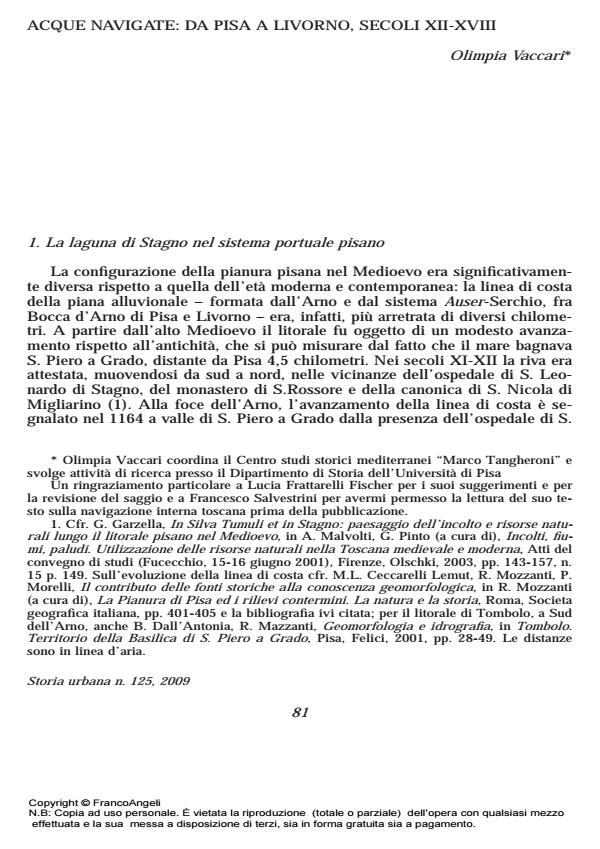Acque navigate: da Pisa a Livorno, secoli XII-XVIII
Journal title STORIA URBANA
Author/s Olimpia Vaccari
Publishing Year 2010 Issue 2009/125
Language Italian Pages 19 P. 81-99 File size 722 KB
DOI 10.3280/SU2009-125005
DOI is like a bar code for intellectual property: to have more infomation
click here
Below, you can see the article first page
If you want to buy this article in PDF format, you can do it, following the instructions to buy download credits

FrancoAngeli is member of Publishers International Linking Association, Inc (PILA), a not-for-profit association which run the CrossRef service enabling links to and from online scholarly content.
The so-called "sailed waters". From Pisa to Leghorn: (12th-18th centuries) - Water Tuscany Pisa Leghorn Harbour During the Middle Ages the plain around Pisa was considerably different in shape compared to today. The coastline, between Bocca d’Arno (Pisa) and Leghorn was much further to the east. Vast expanses of marshland characterized the plain: Pisa and the harbour, known as "Porto Pisano", were linked by several navigable rivers as well as by shipping canals, all of these were connected to the main axis, the river Arno. Once Florence had conquered Pisa (1406) and acquired Leghorn (1421), a sequence of improvements was carried out to develop and reorganize the seaport and hydrographical system of the plain . The decision to build a shipping canal (1560-1575) to connect Leghorn with Pisa was a response to the need to revive Communications and traffic between the old Tuscan port system and Florence via the river Arno. At the beginning of the seventeenth century, Buontalenti’s sixteenth century project boosted trade through the port and the population of Leghorn began to expand so rapidly that in the 1620s the decision was made to build new quarters, to be called Venezia Nuova, near the coast, where the canals, designed for military purposes were to be used for trade, demonstrating the importance of waterborne transport
- Lo sguardo territorialista di Leonardo Tania Salvi, pp.161 (ISBN:978-88-5518-514-1)
Olimpia Vaccari, Acque navigate: da Pisa a Livorno, secoli XII-XVIII in "STORIA URBANA " 125/2009, pp 81-99, DOI: 10.3280/SU2009-125005